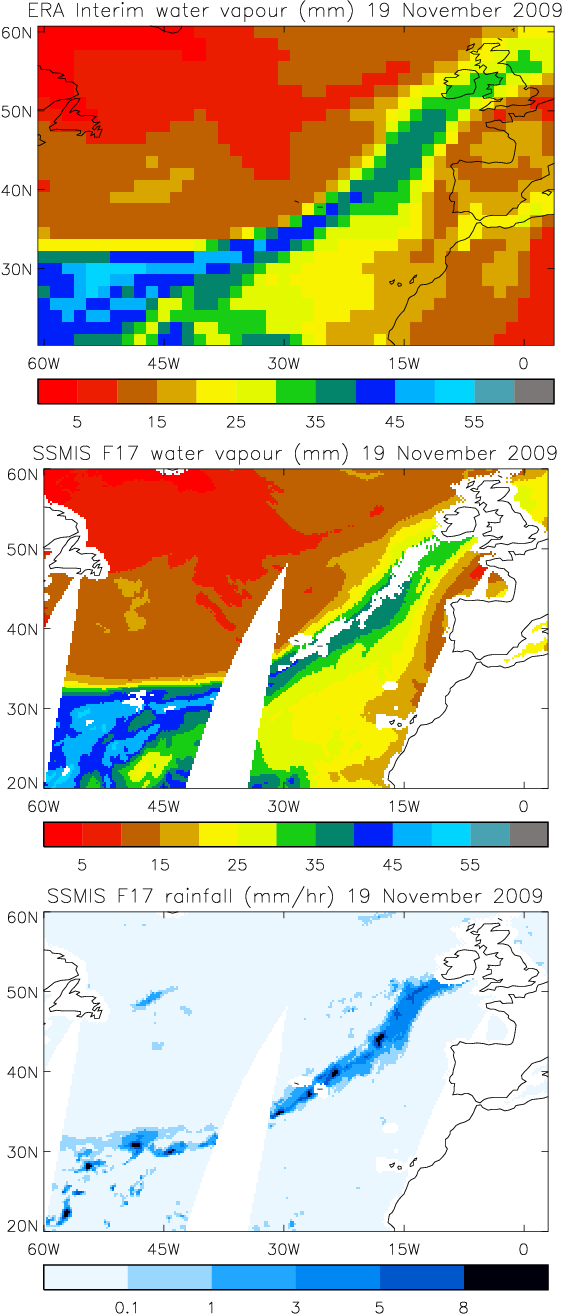December 2011:

Return to latest news
Winter floods in Britain are connected to atmospheric rivers
Work by David Lavers and co-authors has linked flooding in UK river catchements with distinct flows of warm, moist air termed moisture conveyors or Atmospheric Rivers (see New Scientist article).
These moisture conveyors carry large quantities of atmospheric moisture, the vast majority of which is invisible vapour, and this provides the fuel for intense precipitation. When moisture laden air masses (see also global animation of water vapour from the ERA interim reanalysis during 2011) are raised over mountains, the air cools and since cooler air carries less water vapour, rapid condensation of droplets can initiate heavy rainfall.
Over a period of a day or so, these heavy rainfall events can rain out much more water than is contained in each vertical column of air. This is only possible with the continual supply of moisture from further afield. In this work we have identified these warm, moisture conveyors or atmospheric rivers of moisture that supply large quantities of water vapour over a period of a few days. In the case shown in the Figure, this particular event caused substantial flooding in Cumbria (see also animation of atmospheric water totals from ERA Interm reanalysis).
Flooding will be particularly acute in catchments with rapid rainfall-river flow response times such as those found in the north and west of Britain. More results are described in the paper in Geophysical Research Letters
Since water vapour is almost certain to increase on average in a warming world, there are the implications that these events may become more severe and this is research that we are interested in conducting in the future. This research was conducted as part of the HydEF project funded through the Natural Environment Research Council's Changing Water Cycle program (read more on the departments Weather and Climate Discussion Blog).
Return to latest news
Richard P. Allan Location: Department of Meteorology (2U15)